FIELD Experience: Dr Himani Nautiyal
Who are you?
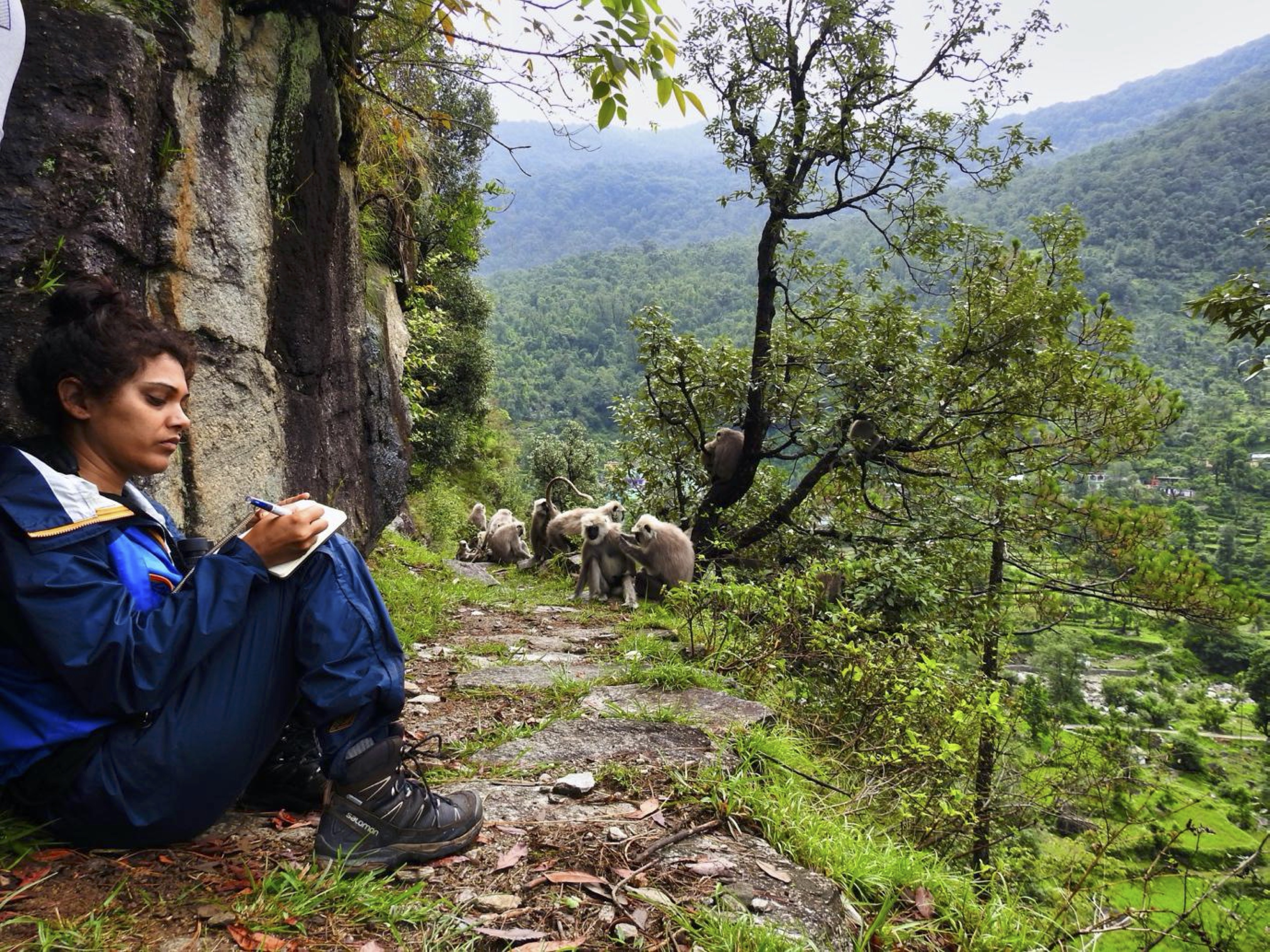 I am Primatologist, working in the Higher Himalayas India. Since childhood, I am well aware of multiple challenges faced by the surrounding ecosystem and wildlife in this ecologically fragile zone. It is a well-known fact that habitat loss, due to anthropogenic activity, is a key factor driving the decline of many wildlife across the globe. I believe conservation of such species is possible only with the coexistence of people and wildlife. In the past seven years of my field research, I strived towards developing a multidisciplinary approach as a means to identify and predict the critical factors driving distinct threats to biodiversity as well as to local communities. This helped me devise a one-of-a-kind paradigm for animal-human coexistence using primates (Himalayan Langur, which is a virtually unknown species) as a model since they are the ideal species for behavior studies.
I am Primatologist, working in the Higher Himalayas India. Since childhood, I am well aware of multiple challenges faced by the surrounding ecosystem and wildlife in this ecologically fragile zone. It is a well-known fact that habitat loss, due to anthropogenic activity, is a key factor driving the decline of many wildlife across the globe. I believe conservation of such species is possible only with the coexistence of people and wildlife. In the past seven years of my field research, I strived towards developing a multidisciplinary approach as a means to identify and predict the critical factors driving distinct threats to biodiversity as well as to local communities. This helped me devise a one-of-a-kind paradigm for animal-human coexistence using primates (Himalayan Langur, which is a virtually unknown species) as a model since they are the ideal species for behavior studies.
Tell us about your field work
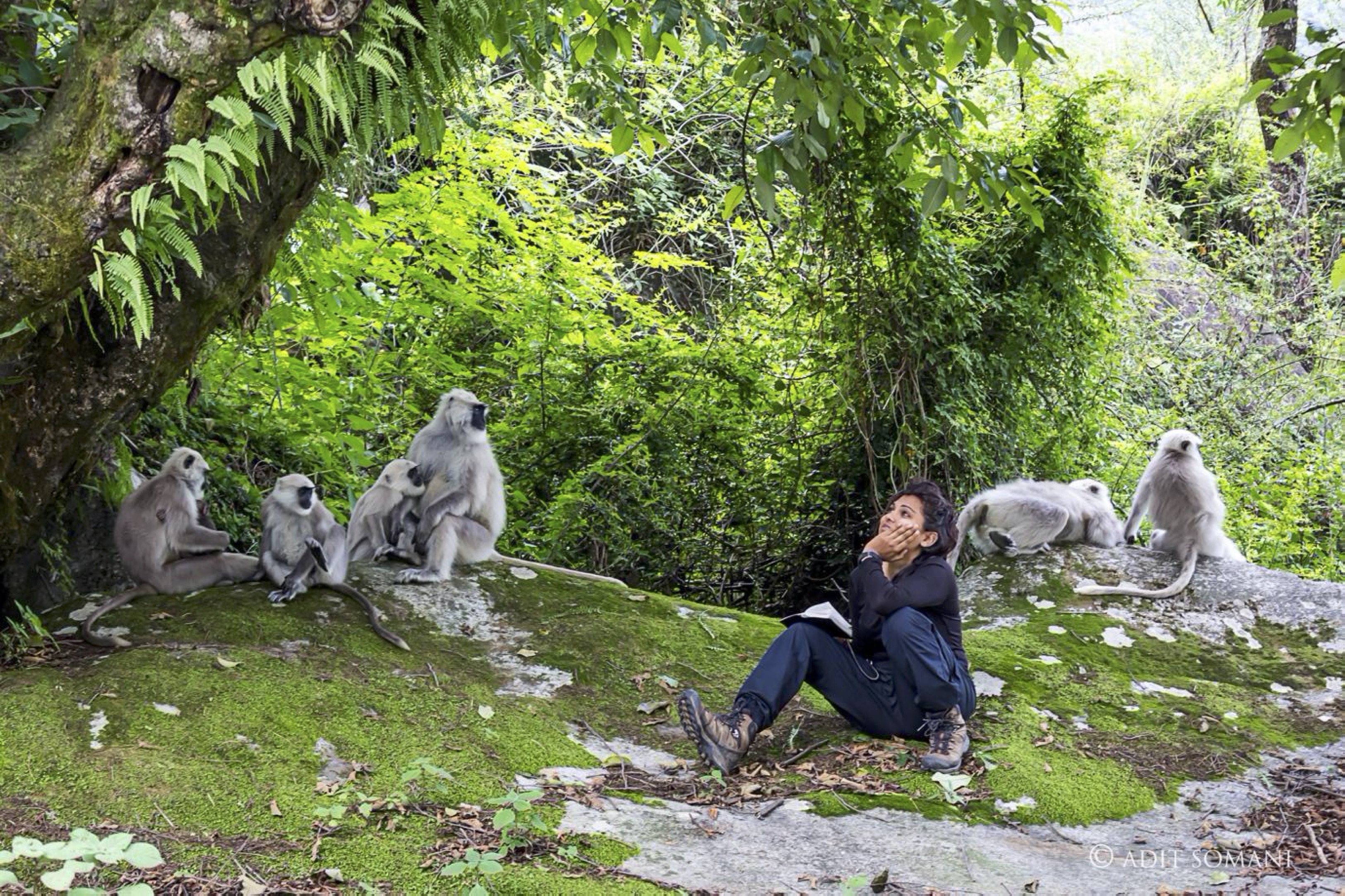 I work in the magnificent Himalayan landscape in the state called Uttarakhand, India. The Himalayas are extremely beautiful yet at the same time very challenging and this is what I like the most about my fieldwork. Himalayan mountains are a popular choice for thrill-seekers as their journey pushes them to the extreme. When we work in such a challenging landscape the entire process helps us to understand our capabilities such as how much we can cope with nature, how we behave in a truly stressful situation, and how practical we are. This experience is not possible unless we take the challenge and discover our new capabilities. I have started to find out my exceptional abilities from the day I have decided to work on the shyest primate species in the Himalayas, the “Himalayan langur”.
I work in the magnificent Himalayan landscape in the state called Uttarakhand, India. The Himalayas are extremely beautiful yet at the same time very challenging and this is what I like the most about my fieldwork. Himalayan mountains are a popular choice for thrill-seekers as their journey pushes them to the extreme. When we work in such a challenging landscape the entire process helps us to understand our capabilities such as how much we can cope with nature, how we behave in a truly stressful situation, and how practical we are. This experience is not possible unless we take the challenge and discover our new capabilities. I have started to find out my exceptional abilities from the day I have decided to work on the shyest primate species in the Himalayas, the “Himalayan langur”.
 My fieldwork is challenging not only due to the landscape but also the nature of my study species. Each day in the field is a learning experience for me, as it brings new challenges and exciting findings about the Himalayan langur. I have been studying Himalayan langur from the elevation range between 1500 meters to 4000 meters. For those who are unaware of primate field studies, habituation is the process when we follow the animal from a distance and wait for them to get familiar with our (researchers) presence. Since I was the first one to study this species at 4000 meters, the habituation process in such a remote location was the true challenge for me during the initial stages of my fieldwork. The habituation process, extreme weather conditions, and challenging terrain provided me with the thrill that people often discover in the mountains.
My fieldwork is challenging not only due to the landscape but also the nature of my study species. Each day in the field is a learning experience for me, as it brings new challenges and exciting findings about the Himalayan langur. I have been studying Himalayan langur from the elevation range between 1500 meters to 4000 meters. For those who are unaware of primate field studies, habituation is the process when we follow the animal from a distance and wait for them to get familiar with our (researchers) presence. Since I was the first one to study this species at 4000 meters, the habituation process in such a remote location was the true challenge for me during the initial stages of my fieldwork. The habituation process, extreme weather conditions, and challenging terrain provided me with the thrill that people often discover in the mountains.
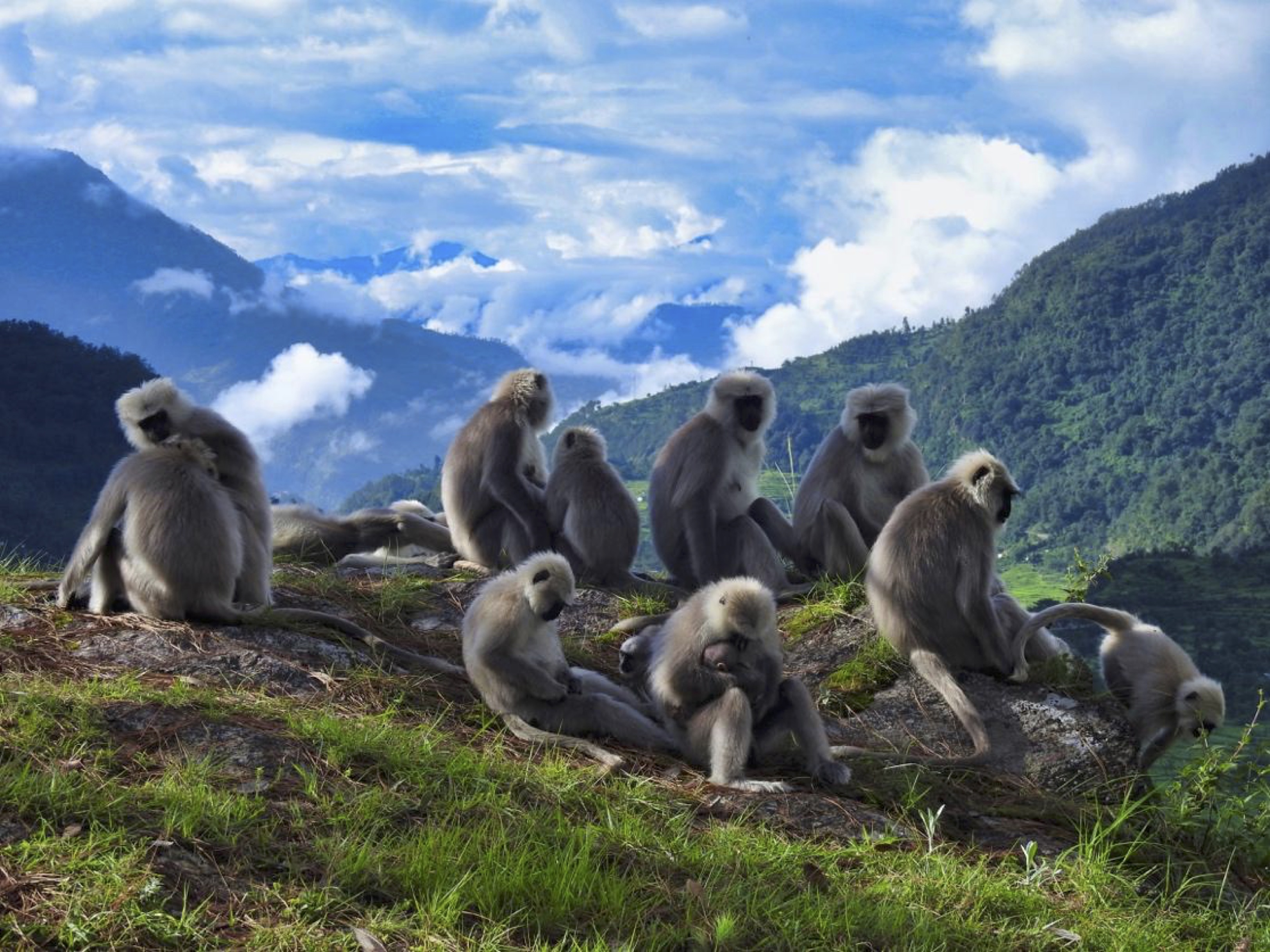 Although I do love this thrill, having the add-on Himalayan langur was somewhat beyond the thrill that mountain holds. When I was preparing for my fieldwork in high elevation, I was not sure which season was good for observation: in summer the temperature is fairly tolerable but it rains often, and in winter snow and temperature is the challenge but it's the mostly dry season. I thought I should start from summer, because it sounded less challenging than snow. Before attempting to study them in extreme weather conditions, I had experience working on them in lower areas (1500-2500 meters); this area is also challenging but has at least some necessities (water, food, electricity, etc.). My high elevation site is 32 km from motorable road connectivity and has no basic necessities. We also don’t have villages around, just 2-3 huts of local herders at the distance of 7-8 km. Due to the lower presence of humans, langurs were very shy compare to my other lower elevation sites. They have not encountered humans at a distance of 10 meters. The real challenge started when I had to walk each day around 20-25 km in a tough high-altitude landscape and come back to camp with no data. This became my routine for about a month: search for them every day and follow them from a long distance just to understand their home range.
Although I do love this thrill, having the add-on Himalayan langur was somewhat beyond the thrill that mountain holds. When I was preparing for my fieldwork in high elevation, I was not sure which season was good for observation: in summer the temperature is fairly tolerable but it rains often, and in winter snow and temperature is the challenge but it's the mostly dry season. I thought I should start from summer, because it sounded less challenging than snow. Before attempting to study them in extreme weather conditions, I had experience working on them in lower areas (1500-2500 meters); this area is also challenging but has at least some necessities (water, food, electricity, etc.). My high elevation site is 32 km from motorable road connectivity and has no basic necessities. We also don’t have villages around, just 2-3 huts of local herders at the distance of 7-8 km. Due to the lower presence of humans, langurs were very shy compare to my other lower elevation sites. They have not encountered humans at a distance of 10 meters. The real challenge started when I had to walk each day around 20-25 km in a tough high-altitude landscape and come back to camp with no data. This became my routine for about a month: search for them every day and follow them from a long distance just to understand their home range.
 Certainly, for langurs, it’s easy to run faster on canopy and disappear quickly. Besides, my decision to start my work in summer turned out to be equally challenging as snow. During my six months of field work, possibly I witnessed a total of a few hours of sunlight, it was continuously raining for about five months, and cold and snowing in winter. Fortunately, we were able to follow one group of langurs after two months of pursuing efforts. This experience did make me realize my capabilities – no matter what is the situation I know I can conduct fieldwork in any situation and I love this part of my work so much.
Certainly, for langurs, it’s easy to run faster on canopy and disappear quickly. Besides, my decision to start my work in summer turned out to be equally challenging as snow. During my six months of field work, possibly I witnessed a total of a few hours of sunlight, it was continuously raining for about five months, and cold and snowing in winter. Fortunately, we were able to follow one group of langurs after two months of pursuing efforts. This experience did make me realize my capabilities – no matter what is the situation I know I can conduct fieldwork in any situation and I love this part of my work so much.

What is your favorite field food?
I love local food, and this includes varieties of meals. We normally eat cooked vegetables and chapati (Indian bread), curry and rice. My most favorite field food is fern shoot, and I like fern stir fry and pickle. Normally during monsoon season, fern shoots are abundant around my field site, and collection of ferns with local people is also fun activity. There are some wild edible mushrooms, they are my most favorite among all the mushrooms I have tested so far.
How does your identity interact with your field work?
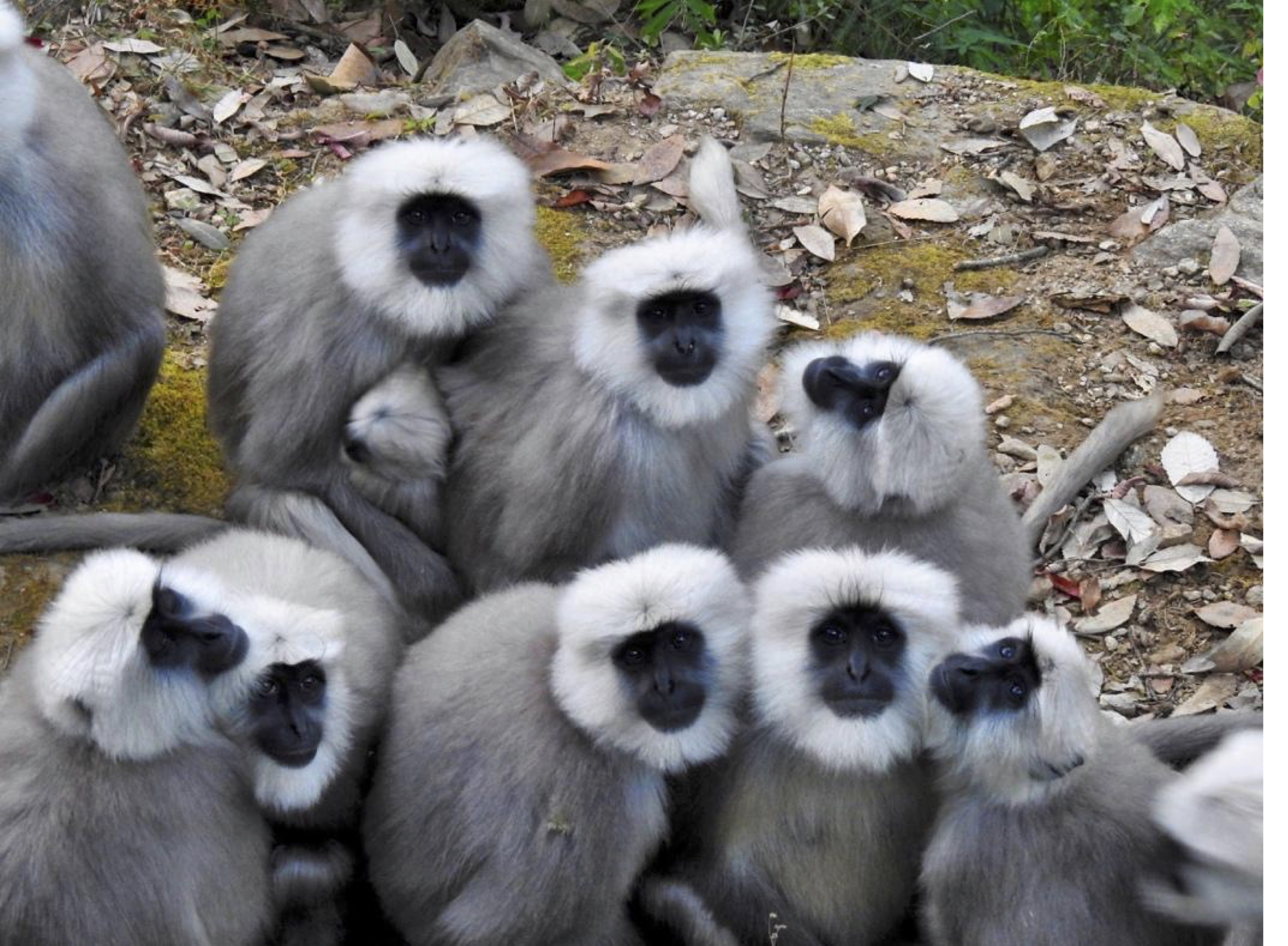 Our identity in the field is molded by our surrounding environment, the local people, forests, and wildlife. My everyday activity in the field is beautifully synchronized with nature, just like local people. Fieldwork taught me to respect and conserve small things, for instance water, electricity, food, and other resources. My identity is more like a person who can easily live along with nature and I tend to maintain this outside the field as well.
Our identity in the field is molded by our surrounding environment, the local people, forests, and wildlife. My everyday activity in the field is beautifully synchronized with nature, just like local people. Fieldwork taught me to respect and conserve small things, for instance water, electricity, food, and other resources. My identity is more like a person who can easily live along with nature and I tend to maintain this outside the field as well.
I have spent a few years of my childhood in the village in the Himalayas, thus it was not that challenging for me to understand the whole new field situation. But based on my personal experience it's the other way around – I have faced identity-based challenges when I am not in the field. For field workers, it’s comfortable to develop the field identity as this is also our profession, passion, and significant part of our daily life. The way we live in the field is very different from the life we have outside the field. At first, it was hard for me to adjust to both conditions but later both my identities become a key part of my life. Fieldwork is always challenging despite any landscape and at first many of us face difficulties to adjust in new situations. I believe it’s our passion for our research/animal which helps us to overcome such challenges. If I want to know the behaviour of langur in the Himalayas, I will study them in spite of any difficulties. We just have to take this as a learning experience and believe me with time it will make you stronger. The moment when we interact with our study species and learn about them, we don’t care about the challenges. In the field when I sleep at night after a long day, I only think about one thing – what new things I will see and learn the next day. I get up the next morning with the excitement of learning and discovering new things in my life.
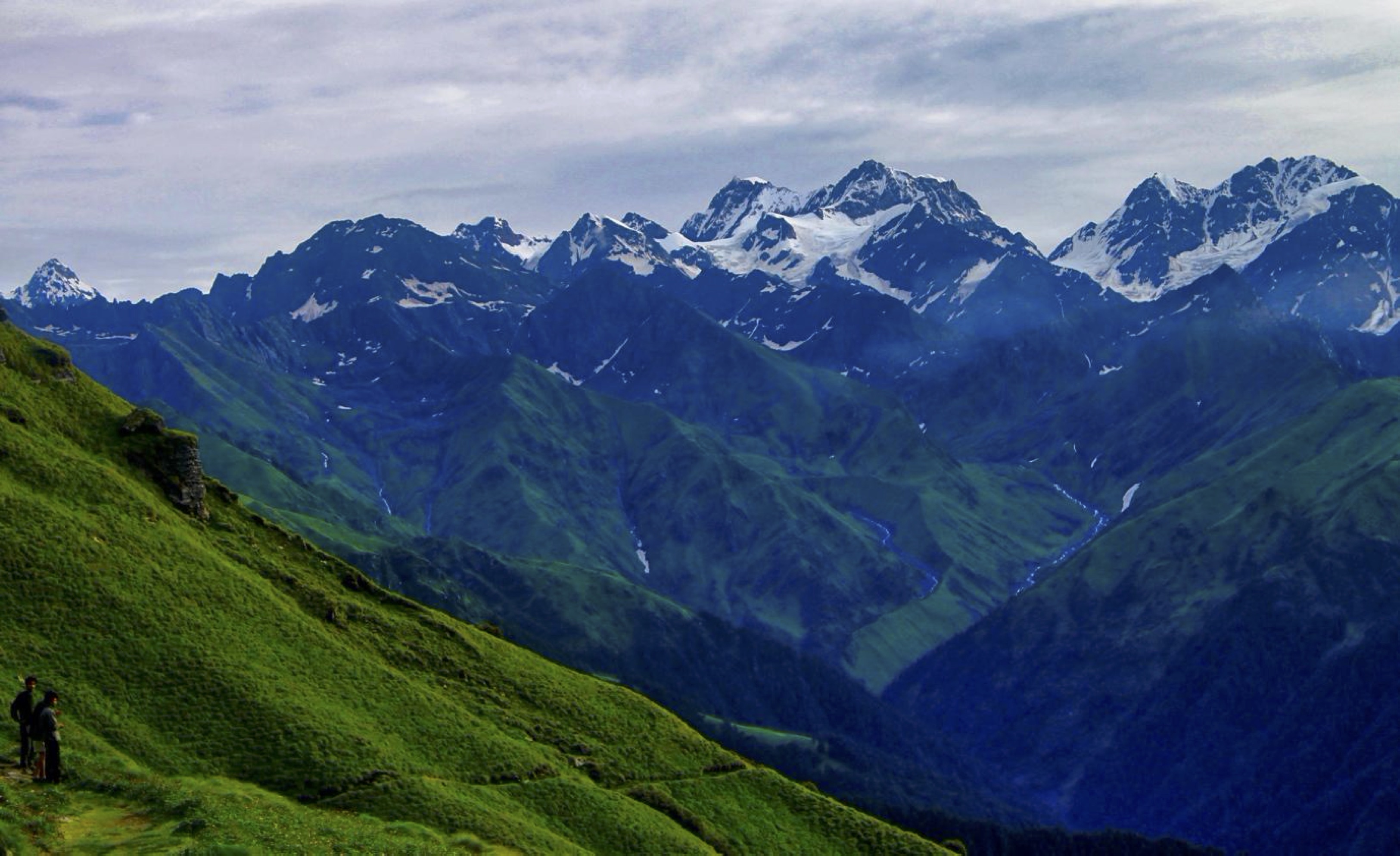 I have spent seven year learning the behavior of our close relative's Primates in their natural environment. Working very close to nature does change our perspective on many things. In nature, everything runs uniformly, all individuals play important roles right from small organisms to top predators or fungi to the big oak tree. Nature teaches us to understand, accept and value the differences around us. I consider myself and other human parts of nature in which all of us have a very important role to play to maintain the balance.
I have spent seven year learning the behavior of our close relative's Primates in their natural environment. Working very close to nature does change our perspective on many things. In nature, everything runs uniformly, all individuals play important roles right from small organisms to top predators or fungi to the big oak tree. Nature teaches us to understand, accept and value the differences around us. I consider myself and other human parts of nature in which all of us have a very important role to play to maintain the balance.
I am Primatologist, working in the Higher Himalayas India. Since childhood, I am well aware of multiple challenges faced by the surrounding ecosystem and wildlife in this ecologically fragile zone. It is a well-known fact that habitat loss, due to anthropogenic activity, is a key factor driving the decline of many wildlife across the globe. I believe conservation of such species is possible only with the coexistence of people and wildlife. In the past seven years of my field research, I strived towards developing a multidisciplinary approach as a means to identify and predict the critical factors driving distinct threats to biodiversity as well as to local communities. This helped me devise a one-of-a-kind paradigm for animal-human coexistence using primates (Himalayan Langur, which is a virtually unknown species) as a model since they are the ideal species for behavior studies.
I work in the magnificent Himalayan landscape in the state called Uttarakhand, India. The Himalayas are extremely beautiful yet at the same time very challenging and this is what I like the most about my fieldwork. Himalayan mountains are a popular choice for thrill-seekers as their journey pushes them to the extreme. When we work in such a challenging landscape the entire process helps us to understand our capabilities such as how much we can cope with nature, how we behave in a truly stressful situation, and how practical we are. This experience is not possible unless we take the challenge and discover our new capabilities. I have started to find out my exceptional abilities from the day I have decided to work on the shyest primate species in the Himalayas, the “Himalayan langur”.
My fieldwork is challenging not only due to the landscape but also the nature of my study species. Each day in the field is a learning experience for me, as it brings new challenges and exciting findings about the Himalayan langur. I have been studying Himalayan langur from the elevation range between 1500 meters to 4000 meters. For those who are unaware of primate field studies, habituation is the process when we follow the animal from a distance and wait for them to get familiar with our (researchers) presence. Since I was the first one to study this species at 4000 meters, the habituation process in such a remote location was the true challenge for me during the initial stages of my fieldwork. The habituation process, extreme weather conditions, and challenging terrain provided me with the thrill that people often discover in the mountains.
Although I do love this thrill, having the add-on Himalayan langur was somewhat beyond the thrill that mountain holds. When I was preparing for my fieldwork in high elevation, I was not sure which season was good for observation: in summer the temperature is fairly tolerable but it rains often, and in winter snow and temperature is the challenge but it's the mostly dry season. I thought I should start from summer, because it sounded less challenging than snow. Before attempting to study them in extreme weather conditions, I had experience working on them in lower areas (1500-2500 meters); this area is also challenging but has at least some necessities (water, food, electricity, etc.). My high elevation site is 32 km from motorable road connectivity and has no basic necessities. We also don’t have villages around, just 2-3 huts of local herders at the distance of 7-8 km. Due to the lower presence of humans, langurs were very shy compare to my other lower elevation sites. They have not encountered humans at a distance of 10 meters. The real challenge started when I had to walk each day around 20-25 km in a tough high-altitude landscape and come back to camp with no data. This became my routine for about a month: search for them every day and follow them from a long distance just to understand their home range.
Certainly, for langurs, it’s easy to run faster on canopy and disappear quickly. Besides, my decision to start my work in summer turned out to be equally challenging as snow. During my six months of field work, possibly I witnessed a total of a few hours of sunlight, it was continuously raining for about five months, and cold and snowing in winter. Fortunately, we were able to follow one group of langurs after two months of pursuing efforts. This experience did make me realize my capabilities – no matter what is the situation I know I can conduct fieldwork in any situation and I love this part of my work so much.

Our identity in the field is molded by our surrounding environment, the local people, forests, and wildlife. My everyday activity in the field is beautifully synchronized with nature, just like local people. Fieldwork taught me to respect and conserve small things, for instance water, electricity, food, and other resources. My identity is more like a person who can easily live along with nature and I tend to maintain this outside the field as well.
I have spent seven year learning the behavior of our close relative's Primates in their natural environment. Working very close to nature does change our perspective on many things. In nature, everything runs uniformly, all individuals play important roles right from small organisms to top predators or fungi to the big oak tree. Nature teaches us to understand, accept and value the differences around us. I consider myself and other human parts of nature in which all of us have a very important role to play to maintain the balance.
